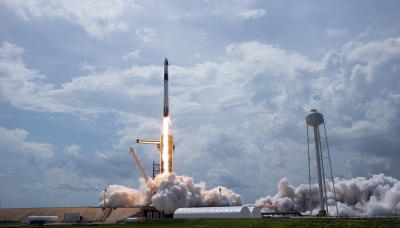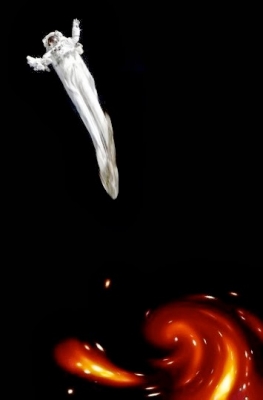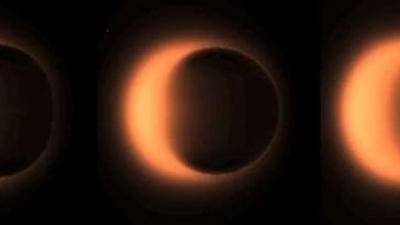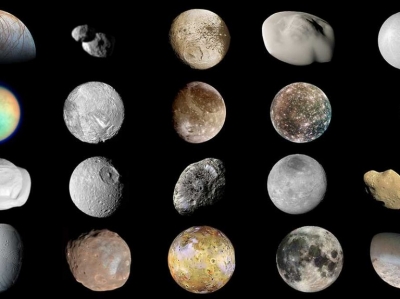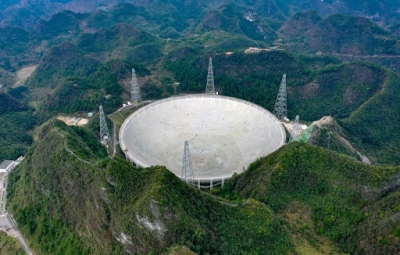
China’s Five-hundred-metre Aperture Spherical Radio Telescope (FAST) passed national evaluation and officially began operation in January 2020. With a dish the size of 30 football fields, it is the world’s largest single-dish radio telescope and the most sensitive listening device. The single-dish radio telescope is made of 4,450 individual panels.
The facility will help scientists learn more about the Universe’s early days, detect low-frequency gravitational waves and hunt for signals that may have been produced by distant alien civilizations.
- NASA’s Spitzer Space Telescope was retired in January 2020. Launched in 2003, Spitzer studied the universe in infrared light, revealing wonders of the Solar System, our galaxy, and beyond. Among its many scientific contributions, Spitzer studied comets and asteroids in the Solar System and found a previously unidentified ring around Saturn.
- In April 2020, the Hubble Space Telescope completed 30 years of service. Perched on the low Earth orbit, the telescope’s modest 2.4-metre mirror continues to give us an unprecedented window on the Universe. Thanks to Hubble and the Gaia space observatory, we were able to calculate the age of our Universe, which is approximately 13.8 billion years old. From observations from Hubble, we also learnt that black holes are at the centre of almost every major galaxy.
Did you know?
- NASA’s James Webb Space Telescope (JWST) is scheduled to be launched in October 2021. While it is touted as the successor of the Hubble Space Telescope, some scientists believe the two telescopes are actually complementary. Hubble has limited capabilities at near-infrared wavelengths, but it is best suited for observing in the ultraviolet and optical ranges of the light spectrum. Whereas James Webb is perfectly poised to study things in infrared range and these include formation of stars and planets, extremely distant galaxies, and even the atmospheres of exoplanets.
- The Hubble’s mission ends in 2021, unless NASA decides to extend it.
Picture Credit : Google


